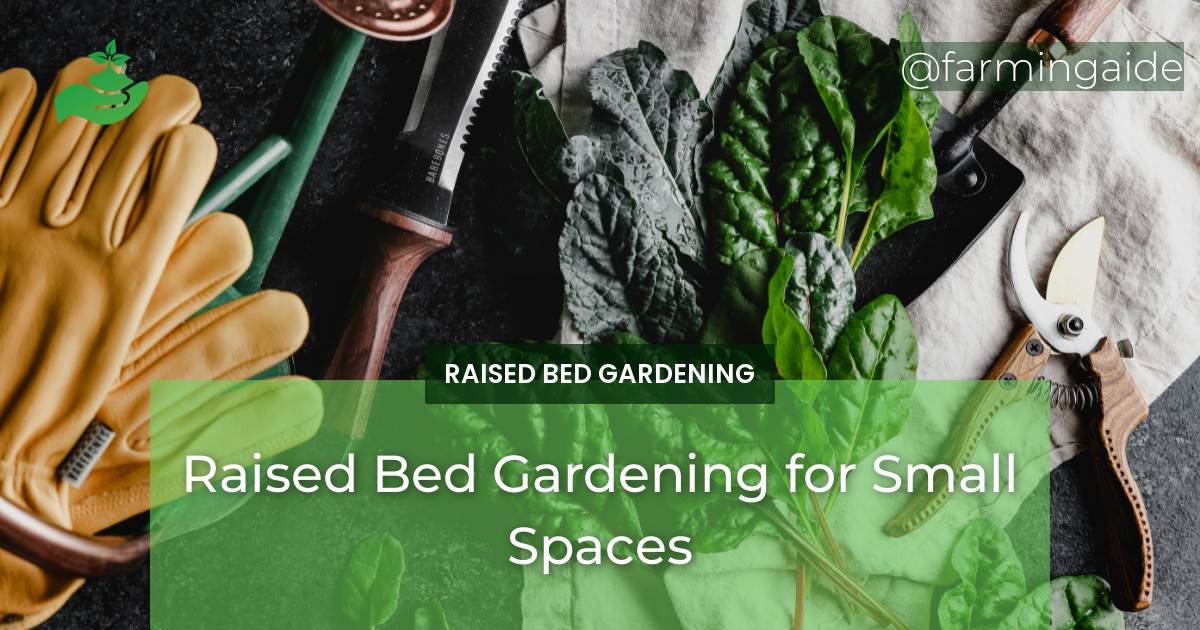Introduction to Raised Bed Gardening
Raised bed gardening is an excellent solution for gardeners with limited space. It is a versatile and creative way to make the most of your available space. Here are some of the benefits of raised bed gardening:
- Improved drainage and soil quality
- Reduced soil erosion and compaction
- Increased yield and planting options
- Ability to grow in areas with poor soil quality
When choosing the location for your raised bed, consider the amount of sun exposure, water availability, and accessibility. Raised beds can be constructed from a variety of materials, including wood, cinder blocks, and plastic. Consider the look, durability, and cost of the material before making a decision.
Table of Contents
Utilizing Raised Beds in Small Gardens or Urban Settings
Benefits of Raised Beds in Small Spaces
Raised beds are an excellent solution for small gardens or urban settings. Here are some of the benefits of raised beds in small spaces:
- Maximizing limited space
- Improved soil quality and drainage
- Ability to grow plants in areas with poor soil quality
- Option for mobility and flexibility
Choosing the Right Size and Shape of Raised Beds for Small Spaces
When choosing the size and shape of your raised beds, consider the available space, the desired planting options, and the aesthetic appeal. Here are some options for raised bed sizes and shapes:
- Rectangular or square-shaped beds
- Circular beds
- Triangle or diamond-shaped beds
Customizing the size and shape of your raised beds is also an option. Consider the unique space and planting options before making a decision.
Tips for Growing in Raised Beds in Small Spaces
When growing in raised beds in small spaces, it is essential to choose the right plants and maximize yields. Here are some tips for growing in raised beds in small spaces:
- Choose plants that are suitable for small spaces, such as herbs, lettuces, and strawberries
- Maximize yield through succession planting
- Consider edible landscaping options
ALSO READ
Vertical Gardening Ideas for Limited Space
Benefits of Vertical Gardening
Vertical gardening is an excellent solution for limited space. It allows for the maximum use of space and can be both creative and decorative. Here are some benefits of vertical gardening:
- Maximizing space and yields
- Ability to grow a variety of plants
- Options for creative and decorative vertical structures
Choosing the Right Structure for Vertical Gardening
Vertical structures can include trellises, cages, and other types of plant supports. When choosing the right structure, consider the available space, the desired planting options, and the aesthetic appeal. Here are some options for vertical structures:
- Trellises
- Cages
- Arbors
Customizing the structure to fit your unique space is also an option. Consider the unique space and planting options before making a decision.
Tips for Growing Vertically in Small Spaces
When growing vertically in small spaces, it is essential to choose the right plants and maximize yields. Here are some tips for growing vertically in small spaces:
- Choose plants that are suitable for vertical growth, such as tomatoes, cucumbers, and beans
- Maximize yield through intercropping and companion planting
- Consider using hydroponic systems for vertical gardening
Maintenance and Care for Raised Bed Gardens in Small Spaces
Soil and Fertilization for Raised Bed Gardens
Choosing the right soil for your raised bed is essential. Consider the unique space and planting options when choosing soil. Here are some tips for soil and fertilization:
- Use a high-quality soil mix that is well-draining and nutrient-rich
- Amend soil with organic matter, such as compost
- Fertilize plants with an organic fertilizer
Watering and Irrigation for Raised Bed Gardens
When watering your raised bed garden, it is essential to choose the right method and maximize water efficiency. Consider the unique space and planting options when choosing the watering method. Here are some tips for watering and irrigation:
- Use a drip irrigation system for maximum water efficiency
- Water plants thoroughly but not excessively
- Consider using a rain barrel to collect and store rainwater
Pest and Disease Control for Raised Bed Gardens
Identifying and controlling pests and diseases is essential for the health of your raised bed garden. Here are some tips for pest and disease control:
- Identify common pests and diseases in raised bed gardens
- Use natural and organic methods for pest and disease control
- Consider using companion planting and crop rotation for pest and disease control
ALSO READ
Conclusion
Raised bed gardening and vertical gardening are excellent solutions for gardeners with limited space. By following these tips, you can maximize your space and yields and enjoy the benefits of fresh produce. Don’t hesitate to try raised bed gardening and vertical gardening for your small space garden.
RELATED ARTICLES:


